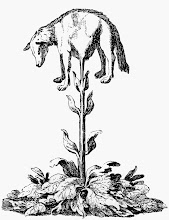(1912 – 1968)
Art, when relevant, takes cues. It is adaptable, and forward-looking, yet its relevance is judged by the extent of agreement with contemporary values. Relevance is not an artistic value, but remains an ingredient of success. Context and demand press upon oeuvre in greater ways than the independent drive to create and the vision it spawns. It's been said that there can be no creation, no vision a priori: just innovation.
There was a time when Canadian painting was dominated by landscape, in a post-impressionist manner, which recognized the vitality of the land we live on and its inexorable marks on our character and consciousness. Our artists recognized the distinctiveness of our surroundings and how the western tradition could interpret them. And what a thing it must have been, alone on Algonquin lake, early in the twentieth century, holding on the tip of a paintbrush the image of an infant nation. Painting the land was what they did, and they did it well, soon there was demand, and that demand remains. And Miller Brittain's relative obscurity in the annals of Canadian art still pivots on his decision to paint the people that walked the streets of his hometown; streets that even then were old. Because his vision was social he bucked a significant trend, and his success during his life was moderate, I gather. Eventually, when the second world war broke out, he joined the RCAF hoping to become a pilot but was made a bomb dropper. A decade after the war his wife died of breast cancer. His work became troubled, biblically-charged, frantically rendered. His draftsmanship faltered as what was left of him succumbed to alcohol. The two galleries that housed his work during Millar Brittain: When the Stars Threw Down Their Spears, which I worked in throughout the summer, were divergent such that they could have been the works of different artists. In many ways they were. The show was a testament to the work of one man inasmuch as to the weight a person bears when he has been iconoclast, when he has lost in love, and when he has seen and made death.
Miller Brittain was born in Saint John, New Brunswick. He trained in Saint John and New York City before enlisting in the Canadian Forces. He died in his hometown of a stroke at age 56. When the Stars Threw Down Their Spears was the biggest retrospective of his work ever assembled, and tonight will be packed up and divided and dispersed, all a little better known than before. His work impacted me and I will miss it.
Some people old enough to remember him shared their stories with me while I processed their admissions or purchases. Here are two I liked. They are both fairly irreverent, but far better than nothing.
-----
I knew him actually.
Really. What was he like?
Well, he was quite a character.
You must have been very young.
Well, let me see. At the time I was a medical student so it would have been in my early twenties, I suppose. Once he brought me and another man, a doctor, around to his house. And he was wearing a large gold pin and an ascot and a pair of white shorts. And he was very flightly, almost bouncing, showing us around. His studio was in the attic, and the artworks on the walls leading up to it on the stairs were the very schizophrenic ones, all pastels. It was all in disarray, and he had a few dogs that would pee all over his drawings. Many of them were salvaged though by Thom Cerack and his wife Celia for a show in Montreal, the paintings and drawings. Yes, he was an interesting man. I remember there were beers bottles lined up along the walls of his house, sort of in the wall
In the wall itself?
Not exactly, lined up with it. He drank quite a bit, you see. We have a Miller Brittain as it happens. My husband and I, we bought it for our paper anniversary, after our first year of marriage. It's an image of a pot of flowers, and behind it a figure of a very emaciated woman. He told me that he believed that when his wife died she would become the flowers, or that her soul would enter them. He believed things to be connected that way.
----------
We used to go down to the Legion with Miller, he was quite a drunk. Often people would drive out to his house and get him drunk and then steal his paintings. Anyway at the time I had an old convertible, and the interior was all white except for the seats, which were all red leather. One night we agreed to give Millar a drive home, and when we got to the car he stopped and looked in. And he looked up at me and said, Virgin's Curse?
September 19,2007
Tuesday, February 17, 2009
Subscribe to:
Post Comments (Atom)
.jpg)





No comments:
Post a Comment